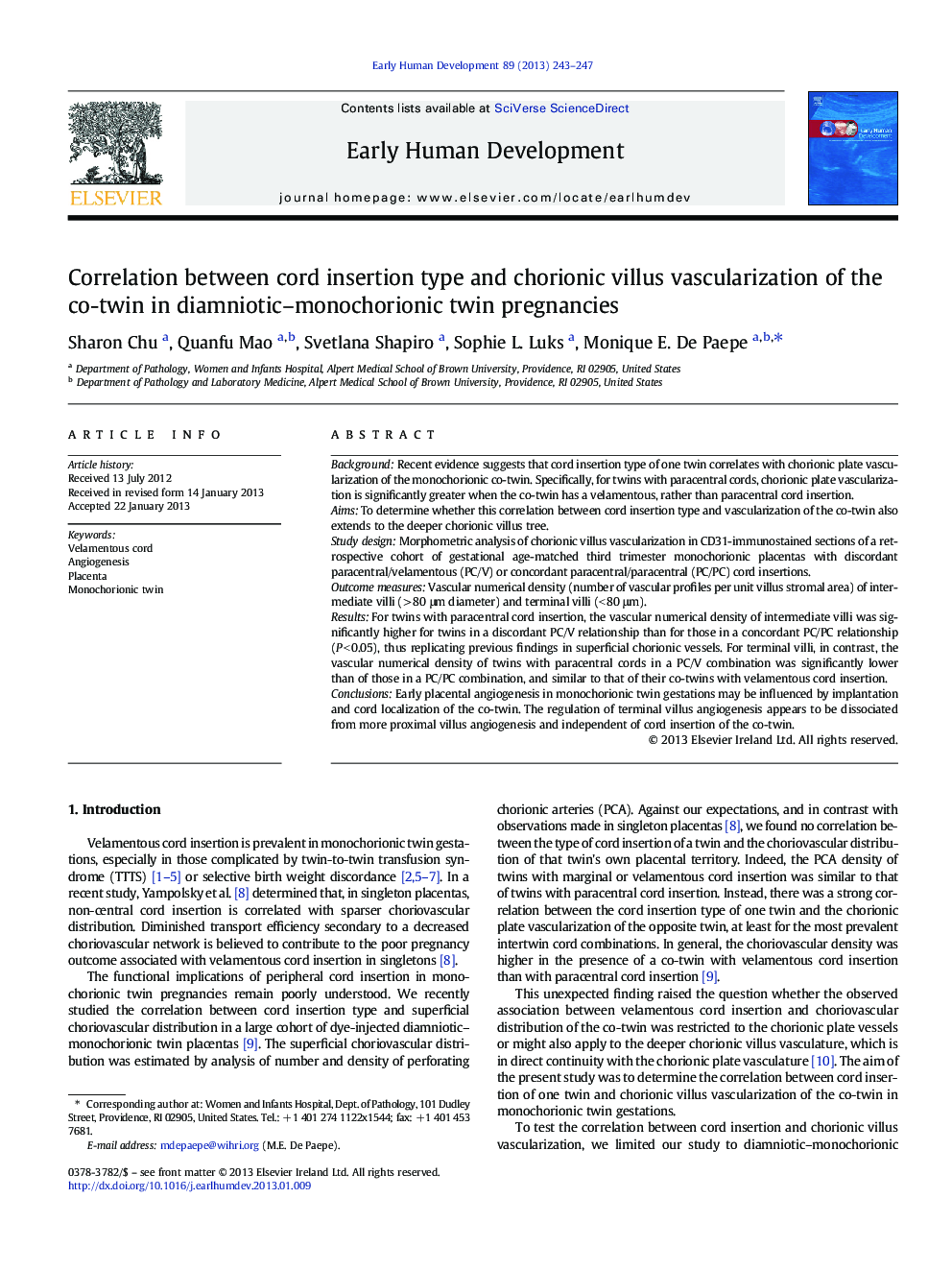| Article ID | Journal | Published Year | Pages | File Type |
|---|---|---|---|---|
| 3917096 | Early Human Development | 2013 | 5 Pages |
BackgroundRecent evidence suggests that cord insertion type of one twin correlates with chorionic plate vascularization of the monochorionic co-twin. Specifically, for twins with paracentral cords, chorionic plate vascularization is significantly greater when the co-twin has a velamentous, rather than paracentral cord insertion.AimsTo determine whether this correlation between cord insertion type and vascularization of the co-twin also extends to the deeper chorionic villus tree.Study designMorphometric analysis of chorionic villus vascularization in CD31-immunostained sections of a retrospective cohort of gestational age-matched third trimester monochorionic placentas with discordant paracentral/velamentous (PC/V) or concordant paracentral/paracentral (PC/PC) cord insertions.Outcome measuresVascular numerical density (number of vascular profiles per unit villus stromal area) of intermediate villi (> 80 μm diameter) and terminal villi (< 80 μm).ResultsFor twins with paracentral cord insertion, the vascular numerical density of intermediate villi was significantly higher for twins in a discordant PC/V relationship than for those in a concordant PC/PC relationship (P < 0.05), thus replicating previous findings in superficial chorionic vessels. For terminal villi, in contrast, the vascular numerical density of twins with paracentral cords in a PC/V combination was significantly lower than of those in a PC/PC combination, and similar to that of their co-twins with velamentous cord insertion.ConclusionsEarly placental angiogenesis in monochorionic twin gestations may be influenced by implantation and cord localization of the co-twin. The regulation of terminal villus angiogenesis appears to be dissociated from more proximal villus angiogenesis and independent of cord insertion of the co-twin.
